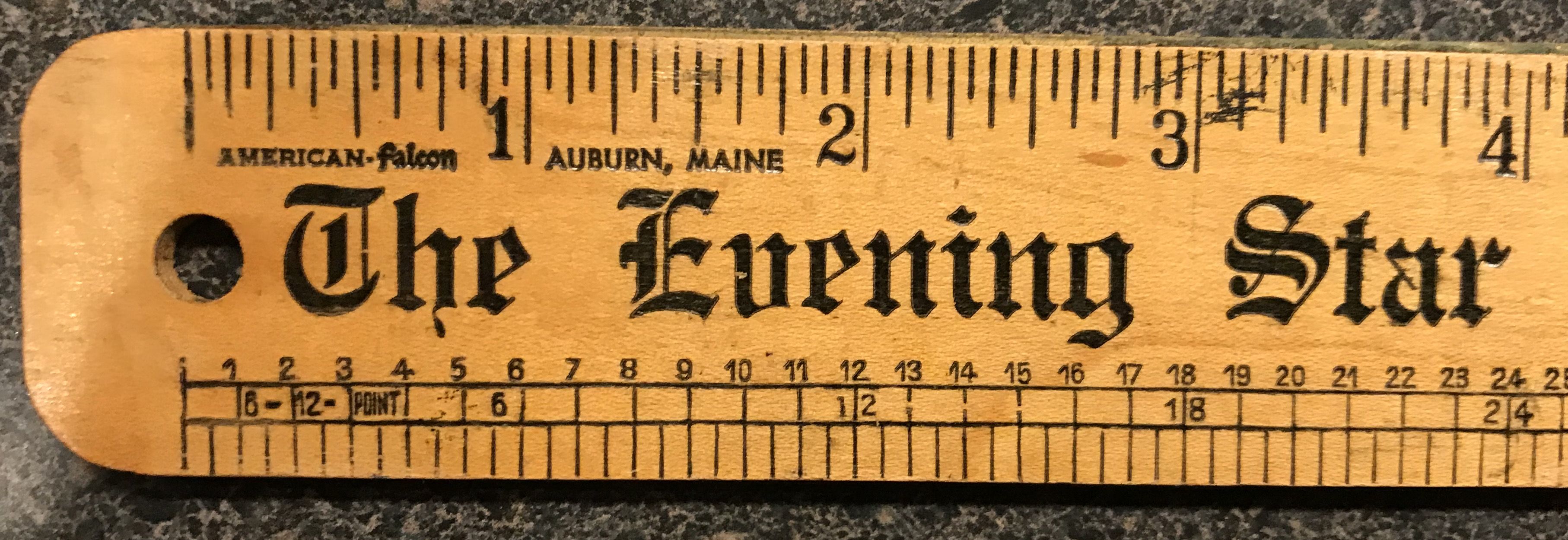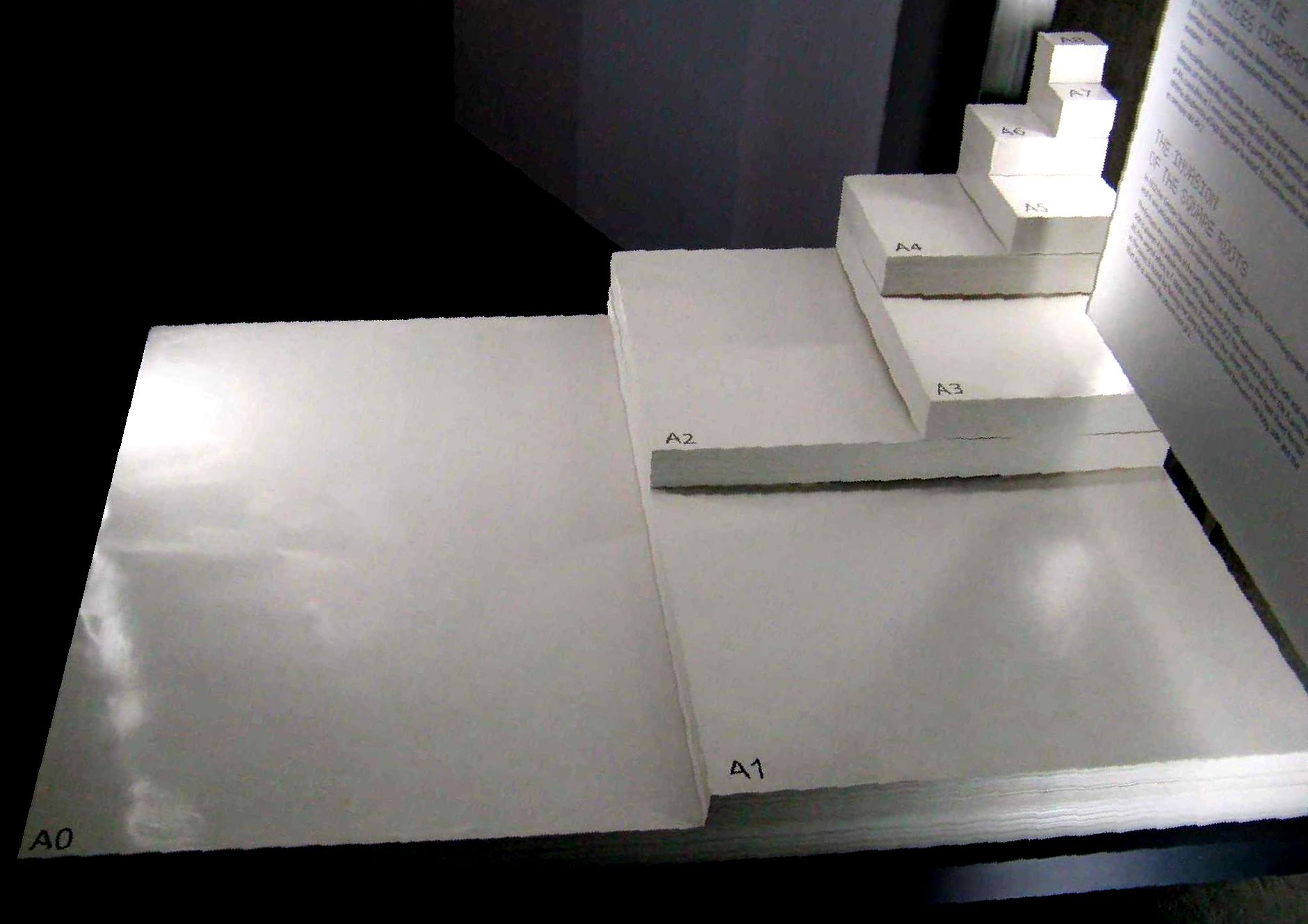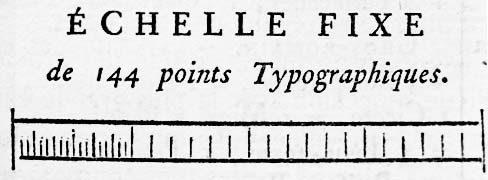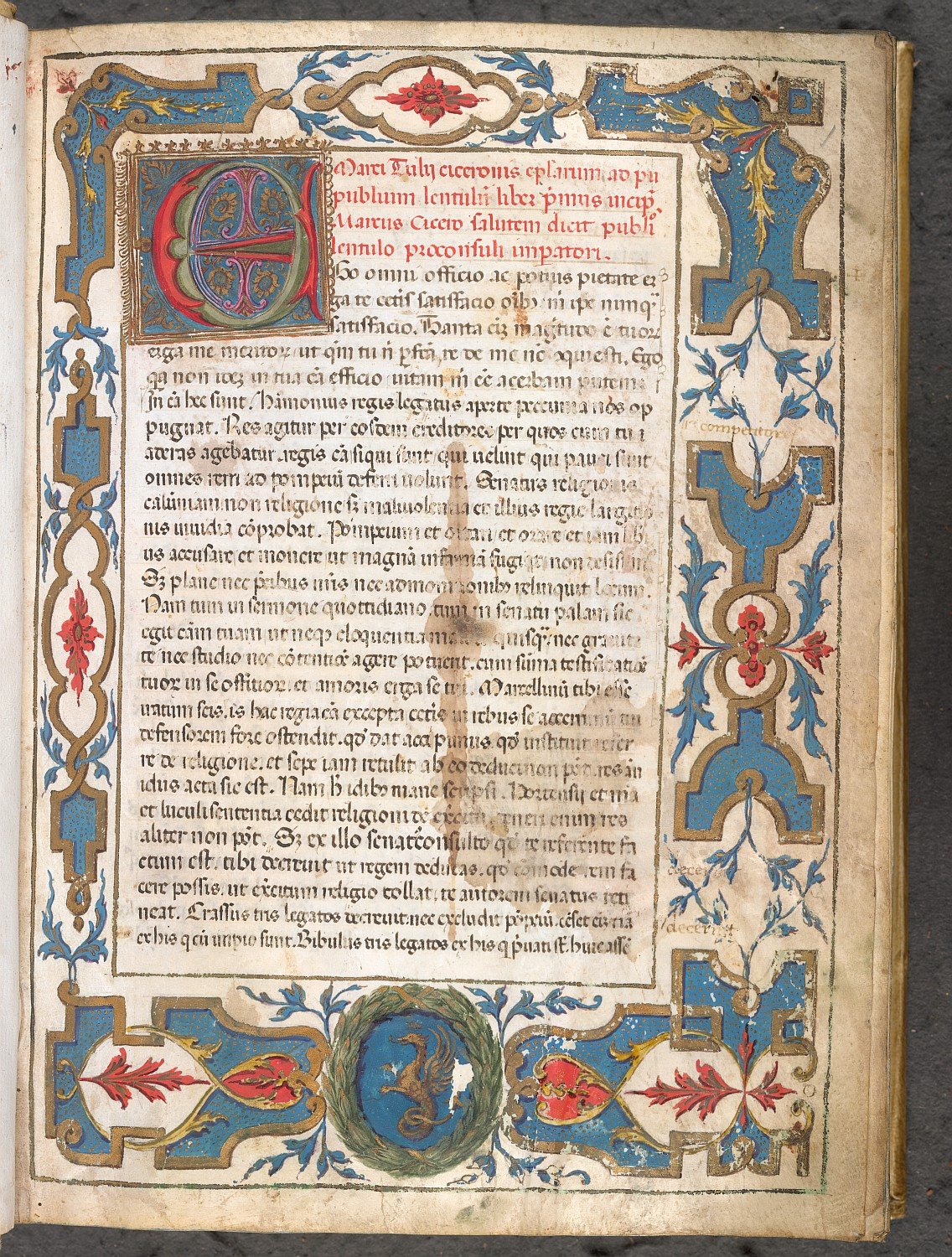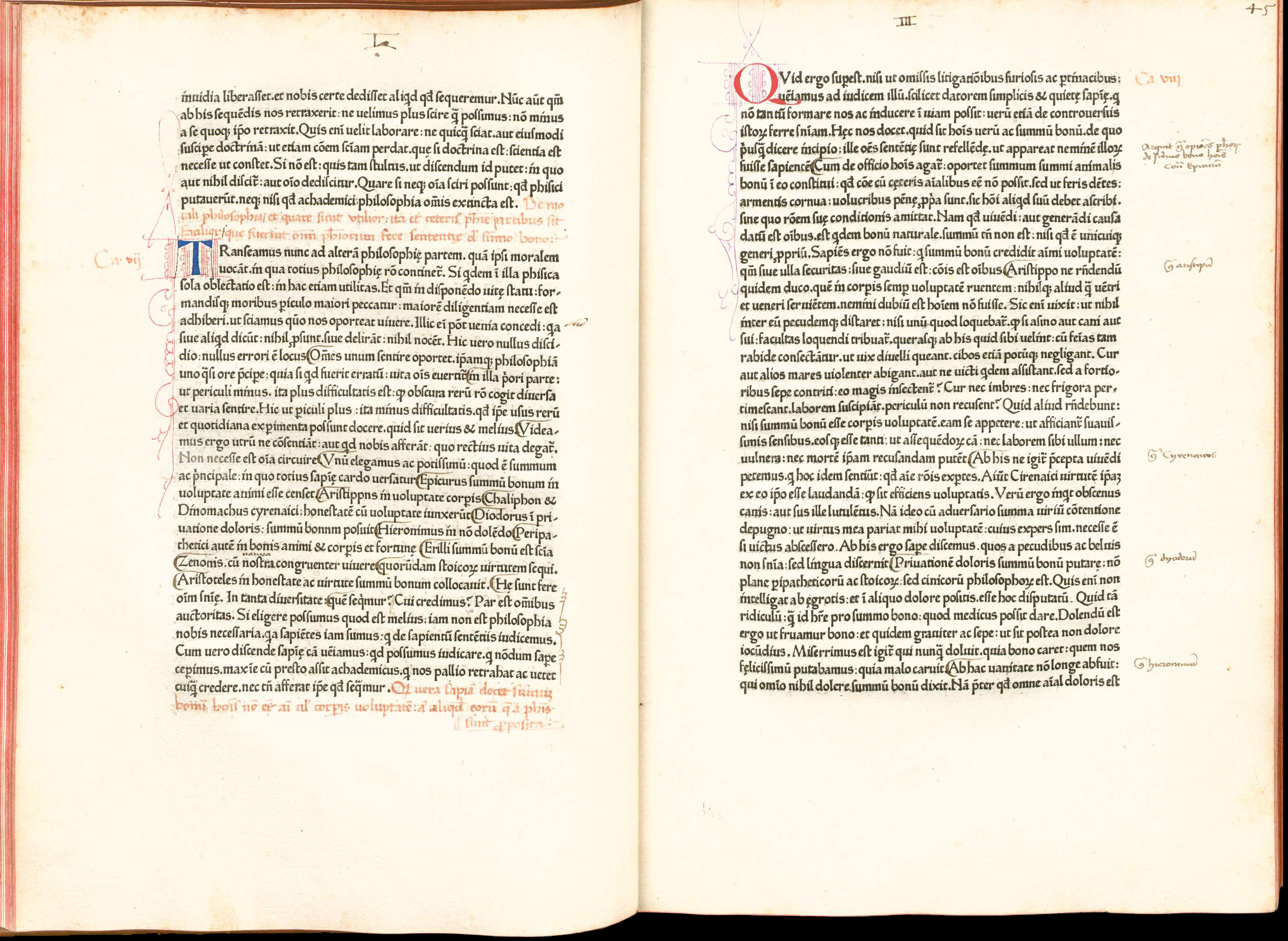|
Cicero (typography)
A cicero is a unit of measure used in typography in Italy, France and other continental European countries, first used by Pannartz and Sweynheim in 1468 for the edition of Cicero's ''Epistulae ad Familiares''. The font size thus acquired the name ''cicero''. It is of the historical French inch, and is divided into 12 points, known in English as French points or Didot points. The unit of the cicero is similar to an English pica, although the French inch was slightly larger than the English inch. There are about 1.066 picas to a cicero; a pica is 4.23333333 mm and a cicero is 4.51165812456 mm. Cicero (and the points derived from cicero) was used in the early days of typography in continental Europe. In modern times, all computers use pica (and the points derived from pica) as font size measurement – alongside millimeters in countries using the metric system – for line length and paper size Paper size standards govern the size of sheets of paper used as wr ... [...More Info...] [...Related Items...] OR: [Wikipedia] [Google] [Baidu] |
Typographic Unit
Typographic units are the units of measurement used in typography or typesetting. Traditional typometry units are different from familiar metric units because they were established in the early days of printing. Though most printing is digital now, the old terms and units have persisted. Even though these units are all very small, across a line of print they add up quickly. Confusions such as resetting text originally in type of one unit in type of another will result in words moving from one line to the next, resulting in all sorts of typesetting errors (viz. rivers, widows and orphans, disrupted tables, and misplaced captions). Before the popularization of desktop publishing, type measurements were done with a tool called a typometer. Development In Europe, the Didot point system was created by François-Ambroise Didot (1730–1804) in c. 1783. Didot's system was based on Pierre Simon Fournier's (1712–1768), but Didot modified Fournier's by adjusting the base unit precis ... [...More Info...] [...Related Items...] OR: [Wikipedia] [Google] [Baidu] |
Europe
Europe is a large peninsula conventionally considered a continent in its own right because of its great physical size and the weight of its history and traditions. Europe is also considered a subcontinent of Eurasia and it is located entirely in the Northern Hemisphere and mostly in the Eastern Hemisphere. Comprising the westernmost peninsulas of Eurasia, it shares the continental landmass of Afro-Eurasia with both Africa and Asia. It is bordered by the Arctic Ocean to the north, the Atlantic Ocean to the west, the Mediterranean Sea to the south and Asia to the east. Europe is commonly considered to be separated from Asia by the watershed of the Ural Mountains, the Ural River, the Caspian Sea, the Greater Caucasus, the Black Sea and the waterways of the Turkish Straits. "Europe" (pp. 68–69); "Asia" (pp. 90–91): "A commonly accepted division between Asia and Europe ... is formed by the Ural Mountains, Ural River, Caspian Sea, Caucasus Mountains, and the Blac ... [...More Info...] [...Related Items...] OR: [Wikipedia] [Google] [Baidu] |
Paper Size
Paper size standards govern the size of sheets of paper used as writing paper, stationery, cards, and for some printed documents. The ISO 216 standard, which includes the commonly used A4 size, is the international standard for paper size. It is used across the world except in North America and parts of Central and South America, where North American paper sizes such as " Letter" and " Legal" are used. The international standard for envelopes is the C series of ISO 269. International paper sizes The international paper size standard is ISO 216. It is based on the German DIN 476 standard for paper sizes. ISO paper sizes are all based on a single aspect ratio of the square root of 2, or approximately 1:1.41421. There are different series, as well as several extensions. The following international paper sizes are included in Cascading Style Sheets (CSS): ''A3'', ''A4'', ''A5'', ''B4'', ''B5''. A series There are 11 sizes in the A series, designated A0–A10, ... [...More Info...] [...Related Items...] OR: [Wikipedia] [Google] [Baidu] |
Line Length
In typography, line length is the width of a block of typeset text, usually measured in units of length like inches or points or in characters per line (in which case it is a measure). A block of text or paragraph has a maximum line length that fits a determined design. If the lines are too short then the text becomes disjointed; if they are too long, the content loses rhythm as the reader searches for the start of each line. Line length is determined by typographic parameters based on a formal grid and template with several goals in mind: balance and function for fit and readability with a sensitivity to aesthetic style in typography. Typographers adjust line length to aid legibility or copy fit. Text can be flush left and ragged right, flush right and ragged left, or justified where all lines are of equal length. In a ragged right setting, line lengths vary to create a ragged right edge. Sometimes this can be visually satisfying. For justified and ragged right setting ... [...More Info...] [...Related Items...] OR: [Wikipedia] [Google] [Baidu] |
Inch
Measuring tape with inches The inch (symbol: in or ″) is a unit of length in the British imperial and the United States customary systems of measurement. It is equal to yard or of a foot. Derived from the Roman uncia ("twelfth"), the word ''inch'' is also sometimes used to translate similar units in other measurement systems, usually understood as deriving from the width of the human thumb. Standards for the exact length of an inch have varied in the past, but since the adoption of the international yard during the 1950s and 1960s the inch has been based on the metric system and defined as exactly 25.4 mm. Name The English word "inch" ( ang, ynce) was an early borrowing from Latin ' ("one-twelfth; Roman inch; Roman ounce"). The vowel change from Latin to Old English (which became Modern English ) is known as umlaut. The consonant change from the Latin (spelled ''c'') to English is palatalisation. Both were features of Old English phonology; see ... [...More Info...] [...Related Items...] OR: [Wikipedia] [Google] [Baidu] |
Pica (typography)
The pica is a typographic unit of measure corresponding to approximately of an inch, or from to of a foot. One pica is further divided into 12 points. In printing, three pica measures are used: * The French pica of 12 Didot points (also called cicero) generally is: 12 × 0.376 = . * The American pica of . It was established by the United States Type Founders' Association in 1886. In TeX one pica is of an inch. * The contemporary computer PostScript pica is exactly of an inch or of a foot, i.e. 4.2 mm or 0.1 in. Publishing applications such as Adobe InDesign and QuarkXPress represent pica measurements with whole-number picas left of a lower-case ''p'', followed by the points number, for example: 5p6 represents 5 picas and 6 points, or 5 picas. Cascading Style Sheets (CSS) defined by the World Wide Web Consortium use pc as the abbreviation for pica ( of an inch), and pt for point ( of an inch). The pica is also used in measuring the font capacity and is applied ... [...More Info...] [...Related Items...] OR: [Wikipedia] [Google] [Baidu] |
Point (typography)
In typography, the point is the smallest typographic unit, unit of measure. It is used for measuring typeface, font size, leading, and other items on a printed page. The size of the point has varied throughout printing's history. Since the 18th century, the size of a point has been between 0.18 and 0.4 millimeters. Following the advent of desktop publishing in the 1980s and 1990s, digital printing has largely supplanted the printing press, letterpress printing and has established the DTP point (DeskTop Publishing point) as the de facto standard, ''de facto'' standard. The DTP point is defined as of an inch, international inch () and, as with earlier American point sizes, is considered to be of a pica (typography), pica. In metal type, the point size of the font describes the body height (typography), height of the metal body (typography), body on which the typeface's characters were cast. In digital type, letters of a font are designed around an imaginary space called an ' ... [...More Info...] [...Related Items...] OR: [Wikipedia] [Google] [Baidu] |
Epistulae Ad Familiares
''Epistulae ad Familiares'' (''Letters to Friends'') is a collection of letters between Roman politician and orator Marcus Tullius Cicero and various public and private figures. The letters in this collection, together with Cicero's other letters, are considered the most reliable sources of information for the period leading up to the fall of the Roman Republic. Traditionally spanning 16 books, and featuring letters from 62 to 43 BCE, the collection was likely first published by Cicero's freedman and personal secretary Marcus Tullius Tiro sometime after Cicero's death in 43 BCE. A number of manuscript copies of this collection have reached modern times. The earliest witness to the text is a palimpsest on a single leaf, written in uncials of the fifth or sixth century ( CLA IV.443; it contains portions of letters 6.9 and 6.10. Two more fragments from 12th-century manuscripts – the outer bifolium of an eight-sheet gathering containing 2.1.1–2.17.4, and a single leaf ... [...More Info...] [...Related Items...] OR: [Wikipedia] [Google] [Baidu] |
Cicero
Marcus Tullius Cicero ( ; ; 3 January 106 BC – 7 December 43 BC) was a Roman statesman, lawyer, scholar, philosopher, and academic skeptic, who tried to uphold optimate principles during the political crises that led to the establishment of the Roman Empire. His extensive writings include treatises on rhetoric, philosophy and politics, and he is considered one of Rome's greatest orators and prose stylists. He came from a wealthy municipal family of the Roman equestrian order, and served as consul in 63 BC. His influence on the Latin language was immense. He wrote more than three-quarters of extant Latin literature that is known to have existed in his lifetime, and it has been said that subsequent prose was either a reaction against or a return to his style, not only in Latin but in European languages up to the 19th century. Cicero introduced into Latin the arguments of the chief schools of Hellenistic philosophy and created a Latin philosophical voc ... [...More Info...] [...Related Items...] OR: [Wikipedia] [Google] [Baidu] |
Arnold Pannartz And Konrad Sweynheim
Arnold Pannartz and Conrad Sweynheym were two printers of the 15th century, associated with Johannes Gutenberg and the use of his invention, the mechanical movable-type printing press. Backgrounds Arnold Pannartz was, perhaps, a native of Prague, and Conrad Sweynheym of Eltville near Mainz. Gottfried Zedler believed (''Gutenberg-Forschungen,'' 1901) that Sweynheym worked at Eltville with Johannes Gutenberg in 1461–1464. Whether Pannartz had been connected with Sweynheym in Germany is not known. It is certain that the two brought Gutenberg's invention, the mechanical movable-type printing press, to Italy. Pannartz died about 1476, Sweynheym in 1477. Printing work The Benedictine abbey of Subiaco was the cradle of Italian printing. Probably Cardinal Giovanni Turrecremata, who was Abbot ''in commendam'' of Subiaco, summoned the two printers there. They came in 1464. The first book that they printed at Subiaco was a Donatus; it has not, however, been preserved. The first book ... [...More Info...] [...Related Items...] OR: [Wikipedia] [Google] [Baidu] |
France
France (), officially the French Republic ( ), is a country primarily located in Western Europe. It also comprises of overseas regions and territories in the Americas and the Atlantic, Pacific and Indian Oceans. Its metropolitan area extends from the Rhine to the Atlantic Ocean and from the Mediterranean Sea to the English Channel and the North Sea; overseas territories include French Guiana in South America, Saint Pierre and Miquelon in the North Atlantic, the French West Indies, and many islands in Oceania and the Indian Ocean. Due to its several coastal territories, France has the largest exclusive economic zone in the world. France borders Belgium, Luxembourg, Germany, Switzerland, Monaco, Italy, Andorra, and Spain in continental Europe, as well as the Netherlands, Suriname, and Brazil in the Americas via its overseas territories in French Guiana and Saint Martin. Its eighteen integral regions (five of which are overseas) span a combined area of ... [...More Info...] [...Related Items...] OR: [Wikipedia] [Google] [Baidu] |
Length
Length is a measure of distance. In the International System of Quantities, length is a quantity with dimension distance. In most systems of measurement a base unit for length is chosen, from which all other units are derived. In the International System of Units (SI) system the base unit for length is the metre. Length is commonly understood to mean the most extended dimension of a fixed object. However, this is not always the case and may depend on the position the object is in. Various terms for the length of a fixed object are used, and these include height, which is vertical length or vertical extent, and width, breadth or depth. Height is used when there is a base from which vertical measurements can be taken. Width or breadth usually refer to a shorter dimension when length is the longest one. Depth is used for the third dimension of a three dimensional object. Length is the measure of one spatial dimension, whereas area is a measure of two dimensions (length squ ... [...More Info...] [...Related Items...] OR: [Wikipedia] [Google] [Baidu] |
